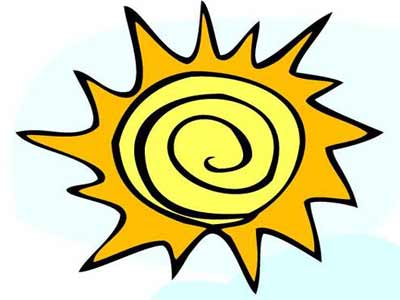How Does
Solar Energy Work?
How does solar energy work? This common question will be answered here.
If you haven't read the page addressing the question of "what is solar energy?", we suggest that you click the link and read it first. Then return to this page and get the answer to "how does solar power work?"
For links to other solar topics, please see the main solar energy page.

HOW DOES SOLAR ENERGY WORK?
The two types of solar energy - passive and active solar - work quite differently, so we will discuss them separately below.
The conversion of solar energy to electricity through the use of photovoltaic cells or solar panels is another topic altogether.
Active Solar Energy
Active solar energy is the conversion of solar energy into usable heat via electrical or mechanical equipment - such as pumps and fans - which increase the usable heat in the system.
Active solar systems use solar collectors and additional electricity to power pumps or fans to redistribute the sun's energy.
The heat is collected, then transferred to another location for immediate heating, or for storage for use later.
There are two types of active solar energy systems based on what is heated in the solar energy collectors. (The collector is the device heated by the sun.)
The first type are liquid-based systems which heat water or an antifreeze solution in a "hydronic" collector. The second type are air-based systems where air is heated in an "air collector."
Active solar energy can be used to heat domestic hot water, warm up swimming pools and to heat water for commercial facilities such as laundries and fitness centers.
Click to read more about active solar.
Passive Solar Energy
The term "passive" implies that no additional mechanical equipment is used - other than the normal building elements.
Some passive systems use small amounts of conventional energy to control dampers, shutters and other devices that enhance passive solar energy collection and storage, and reduce undesirable heat transfer.
All solar gains are brought in through windows. The most efficient window orientation for heat gain is due south, but any variation within 30 degrees of due south is acceptable. In the southern hemisphere the reverse is true - windows face due north.
Click to read more about passive solar.
Well, that answers the question of "how does solar power work?"
Return to the main solar page to read about other solar topics, or choose a different alternative energy topic from the nav-bar buttons to the left of screen.
Return From How Does Solar Energy Work to Home Page